November 2020
In this issue:
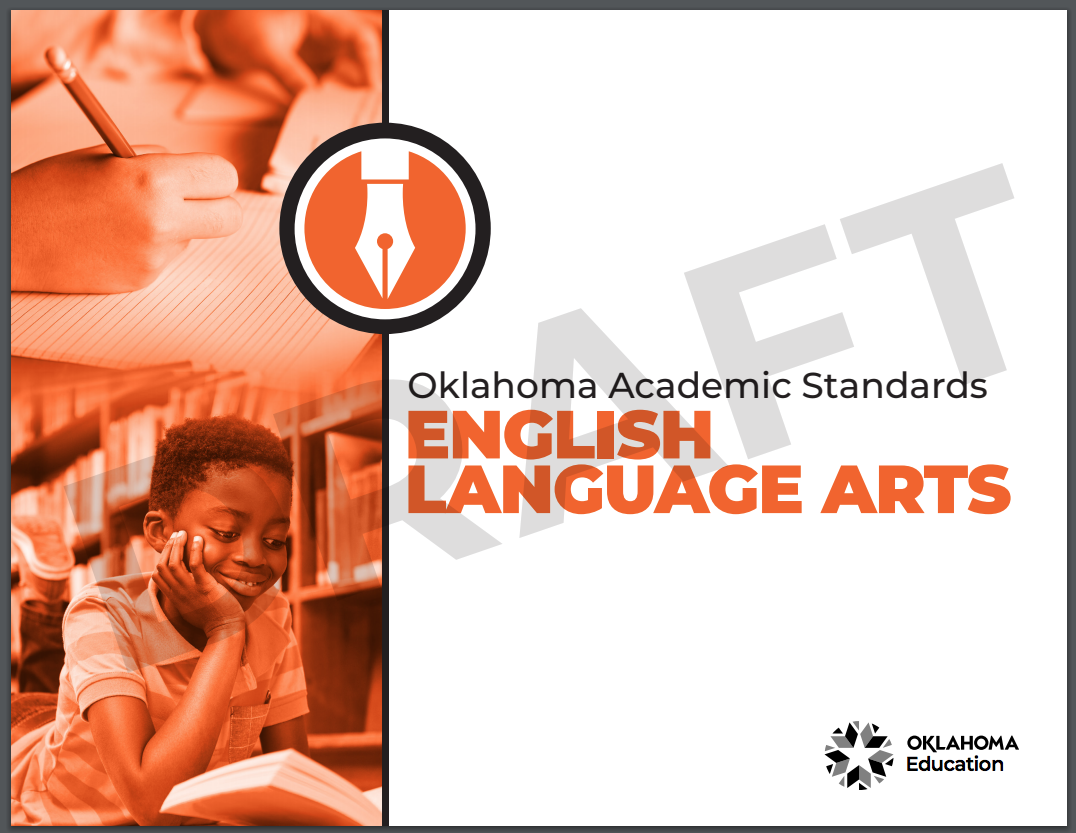 The Oklahoma State Department of Education (OSDE) is seeking feedback on the revised Draft of the Oklahoma Academic Standards for English Language Arts (ELA) Standards, which are up for review and revision in 2020. The OSDE facilitates a revision of academic subject matter standards every six years in accordance with 70 O.S. § 11-103.6a.
Academic subject matter standards are concise, written descriptions of what students are expected to know and be able to do at a specific stage of their education. Academic standards describe educational objectives (i.e., what students should have learned by the end of a course, grade level, or grade span), but they do not describe a particular teaching practice, curriculum, or assessment method.
OSDE asks that all interested stakeholders provide feedback on the standards by following the process below:
All feedback received during the public comment period will be reviewed by the OSDE and ELA writing committee for consideration in the revision process.
The monthly virtual meeting for Oklahoma secondary ELA teachers will be on Wednesday, November 11, from 3:30-4:30 p.m. I will discuss the draft of the new ELA standards and provide time for questions. Then you will have time to submit your feedback. This will especially help teachers in rural areas who do not have a PLC in their building.
Zoom link: https://zoom.us/j/93855136524

I have compiled resources from the past year into this slideshow with the following categories:
- Advice Columns
- Lesson Plans
- Time-Sensitive Events
- Student Activities
- Teacher Learning
- Media
- Writing Contests
- Writing Prompts for Teachers
|
On the writing section of the grade 8 ELA OSTP, each piece of student writing is given a holistic score ranging from 0 (lowest) to 4 (highest). This score, in part, is derived by assessing student performance on the five analytic traits.
The grade 8 holistic writing rubric provides insight into how student responses are scored, and the holistic writing/constructed response exemplars provide explanation for the scores of selected student responses. These exemplars are new for the 2020-2021 school year and would be very helpful for grade 8 teachers and students as they prepare for the OSTP.
 State Superintendent of Public Instruction Joy Hofmeister announced the twelve finalists for Oklahoma’s next Teacher of the Year in late October.
“These tremendous twelve finalists reflect the best of Oklahoma’s classroom teachers,” said Hofmeister. “Not only do these teachers use innovative instructional strategies, but they also place great emphasis on creating meaningful relationships with students and families. All have demonstrated an extraordinary commitment to the success of each of their students and are highly deserving of this honor.”
All finalists were named teachers of the year for their respective districts and selected after their application packets were reviewed by a panel of educators, legislators and members of business and nonprofit organizations.
Two of the finalists are secondary English language arts teachers, Lesa Dickson of Broken Arrow Public Schools and Lori Zimmerman of Woodward Public Schools.
 When asked what advice they would give to fellow ELA teachers during COVID-19, Lesa and Lori had this to say.
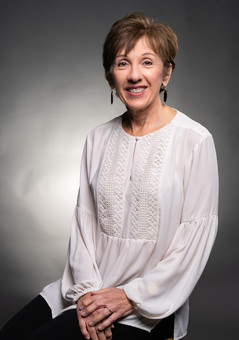
Lesa Dickson
“Horace said, ‘Adversity has the effect of eliciting talents which in prosperous circumstances would have lain dormant,’ and I truly believe this. Teachers are doing remarkable things during this time and making the best of a horrible situation. Whether it’s simply learning how to conduct Zoom meetings, make videos, or post assignments online or it’s technologically advanced like using all types of new apps, we are all stretching and growing from this experience. I believe we learn the most through adversity and will come out on the other side better teachers. In the meantime, though, we must keep our sense of perspective. We can only do and control so much. As long as we stay positive, roll with the punches, and do the best we can do, that is all anyone could possibly ask. Don’t beat yourselves up and don’t stress too much.”
|
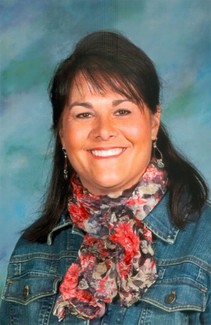
Lori Zimmerman
“One thing for teachers to remember is to give yourself the same care and grace that you give your students. I believe that for many of us this will be like our first year of teaching. Be prepared for that and give yourself some flexibility. Be willing to learn and change and be positive. This will be a good change. Just like in any crisis, teachers need to check in with their kids. Make sure each one is OK. Many may be worried. Kids look to us for reassurance. We need to reassure them that everything will be OK. Teachers also need to know that they will not be able to deliver 100% of their content this year. This is when flexibility kicks in. Try to think of what are the most important outcomes that kids need to know when they leave your classroom at the end of this school year. Take those essential things and focus on those.
“Just remember to make those connections with your students. Make your classroom a safe place for your students so they will want to come to your classroom to learn. So go! Help your students learn. Help them find their smile, and help them belong. Ask hard and interesting questions. Try new things. Share what you’re learning. Ask for help. Defend your students and empower them. It’s time for some new stories of great learning. It’s time to don our capes, adjust our crowns, engage our laughter and realize the power that lies within us. It begins now and it begins with you.”
|
On October 8, Louise Glück was announced as the winner of the 2020 Nobel Prize in Literature. Glück, a former United States Poet Laureate, has written poetry over fifty years. She is the author of 12 books of poetry, including the collection Faithful and Virtuous Night (2014), winner of the National Book Award.
She joins an esteemed cohort of twelve other Americans who have been awarded this honor--Toni Morrison, Bob Dylan, John Steinbeck, Ernest Hemingway, William Faulkner, and Eugene O'Neill. The United States of America is second only to France for the number of Nobel laureates in literature (seventeen vs. thirteen).
As of 2020, the Nobel Prize in Literature has been awarded to 117 individuals, sixteen of whom are women.
When I taught the creative writing elective to my high school students, I used Glück's poem "Purple Bathing Suit" as a mentor text for my students. I picked this poem because of its surprising conclusion.
My creative writing students noticed plenty of craft moves, including some of the following:
- Most of the stanzas are 4 lines long. The middle stanza is 5 lines.
- The tone is hard to determine at first: humorous? sarcastic? judgmental?
- The final stanza has a surprising turn when the speaker, after criticizing the beloved in the purple bathing suit, needs and claims him or her.*
- The lines are enjambed between stanzas 3 and 4 and 4 and 5.
Beyond craft moves, my students enjoyed discussing all the different ways the speaker seemed to initially dislike the person in the purple bathing suit. This is a poem with a very complicated speaker, and I bet you could have a lively class discussion about the speaker's motivations.
*My colleague Christine Koerner challenged my original assumption that the person in the purple bathing suit is a woman. This is an interesting stereotype to interrogate. Could a man wear a purple bathing suit? Absolutely! A Google image search of "purple bathing suit," however, results in only pictures of women. What does this reveal? This poem could open up a conversation about gender stereotypes.
Tips for Teachers: Developing Instructional Materials about American Indians
Prepared by Debbie Reese (Nambé Owingeh) and Jean Mendoza (White)
As educators develop or adapt lesson plans to teach about Native peoples, American Indians in Children’s Literature recommend attention to the following:
- “American Indian” and “Native American” are broad terms that describe the Native Nations of peoples who have lived on North America for thousands of years. Recently, “Indigenous” has come into use, too (note: always use a capital letter for Indigenous). Many people use the three terms interchangeably but educationally, best practice is to teach about and use the name of a specific Native Nation.
- There are over 500 sovereign Native Nations that have treaty or legal agreements with the United States. Like any sovereign nation in the world, they have systems of government with unique ways of selecting leaders, determining who their citizens are (also called tribal members), and exercising jurisdiction over their lands. That political status distinguishes Native peoples from other minority or underrepresented groups in the United States. Native peoples have cultures (this includes unique languages, stories, religions, etc.) specific to who they are, but their most important attribute is sovereignty. Best practice—educationally—is to begin with the sovereignty of Native Nations and then delve into unique cultural attributes (languages, religions, etc.)
- There is a tendency to talk, speak, and write about Native peoples in the past tense, as if they no longer exist. You can help change that misconception by using present tense verbs in your lesson plans, and in your verbal instruction when you are teaching about Native peoples.
- Another tendency is to treat Native creation and traditional stories like folklore or as writing prompts, or to use elements within them as the basis for art activities. Those stories are of religious significance to Native peoples and should be respected in the same ways that people respect Bible stories.
- In many school districts, instruction and stories about Native peoples are limited to Columbus Day or November (Native American month) or Thanksgiving. Native peoples are Native all year long and information about them should be included year-round.
- Native peoples of the 500+ sovereign nations have unique languages. A common mistake is to think that “papoose” is the Native word for baby and that “squaw” is the word for woman. In fact, each nation has its own word for baby and woman, and some words—like squaw—are considered derogatory. [American Indians] also have unique clothing. Some use feathered headdresses; some do not.
- To interrupt common misconceptions, develop instructional materials that focus on a specific nation—ideally—one in the area of the school where you teach. Look for that nation’s website and share it with your students. Teach them to view these websites as primary sources. Instead of starting instruction in the past, start with the present day concerns of that nation.
- To gain an understanding of issues that are of importance to Native peoples, read Native news media like Indian Country Today, Indianz, and listen to radio programs like “Native America Calling.”
- The National Congress of American Indians has free resources online that can help you become more knowledgeable. An especially helpful one is Tribal Nations and the United States: An Introduction, available here: http://www.ncai.org/about-tribes.
- Share what you learn with your fellow teachers!
Source
The Outsiders Native American Passages
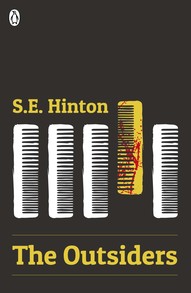
The Outsiders, a young adult novel set in Tulsa and published by Oklahoma teenager S.E. Hinton in 1967, is often taught in Oklahoma English language arts middle school classrooms. I myself taught this book to my eighth grade students back in 2005-2007. More than fifty years have now passed since its publication.
Recently on Twitter, Dr. Debbie Reese, a Nambe Pueblo and founding member of the American Indian Studies program at the University of Illinois, shared some passages from The Outsiders for teachers to consider for their stereotypes about Native Americans. Reese even wrote about a blog post about these passages.
Let's look at the following scene from Chapter 7 of The Outsiders in which Ponyboy has recently shaved his head. Keep in mind the top ten list from the previous section.
Two-Bit was walking in a slow circle around me, and I sighed because I knew what was coming.
"Man, dig baldy here!" He was staring at my head as he circled me. "I wouldn't have believed it. I thought all the wild Indians in Oklahoma had been tamed. What little squaw's got that tuff-lookin' mop of yours, Ponyboy?"
Based on the above guidance from Debbie Reese and Jean Mendoza about teaching about American Indians, how do you react to this passage from The Outsiders, including its use of the word squaw? What would you say to your students about it? How could you help students contextualize the passage or have a fuller, deeper understanding of "Indians in Oklahoma" based on what we now know and understand?
In Chapter 9 of The Outsiders, there is another problematic passage about American Indians.
"Yeah!" screamed Soda as he too did a flying somersault off the steps. He flipped up to walk on his hands and then did a no-hands cartwheel across the yard to beat Darry's performance. The excitement was catching. Screeching like an Indian, Steve went running across the lawn in flying leaps, stopped suddenly, and flipped backward.
What stereotype do you notice in this passage? What kind of discussion could you have with your students about it?
Our ELA classrooms should be safe places for all of our students to learn and grow. Teachers dedicated to equity can address passages like these with thoughtfulness and sensitivity.
|
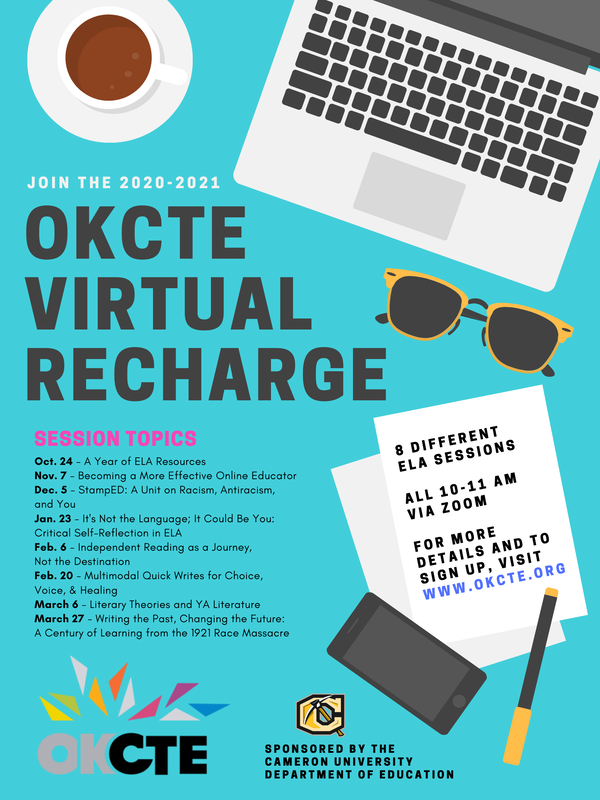 Since the Oklahoma Council of Teachers of English will be unable to offer their Fall Conference as normal, they have planned eight different Zoom workshops throughout the school year to continue to provide the high-quality professional development you get with their Fall conference sessions.
All of the sessions will be monthly from October 2020-March 2021 and will be from 10-11 a.m. on Saturdays via Zoom. Please fill out this registration form and indicate which of the seven sessions to plan to attend. You will receive an email prior to each session you selected with the link and password to access the Zoom workshop.
-
Nov. 7: Becoming a More Effective Online Educator
-
Dec. 5: StampED: A Unit on Racism, Antiracism, and You
-
Jan. 23: It's Not the Language; It Could Be You: Critical Self-Reflection in ELA
-
Feb. 6: Independent Reading as a Journey, Not the Destination
-
Feb. 20: Multimodal Quick Writes for Choice, Voice, & Healing
-
March 6: Literary Theories and YA Literature
-
March 27: Writing the Past, Changing the Future: A Century of Learning from the 1921 Race Massacre
Please follow their website http://www.okcte.org/ and social media for updates!
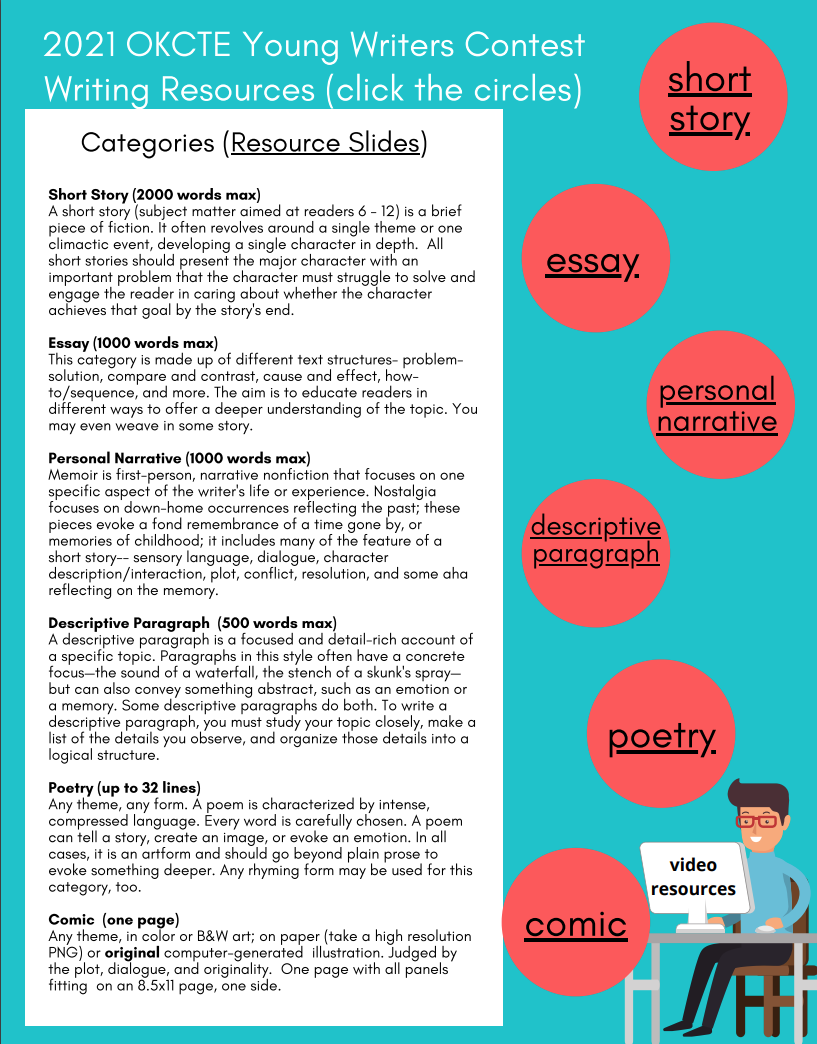 The Oklahoma Council of Teachers of English (OKCTE) invites the young writers of Oklahoma, grades 6-12, to enter the Young Writers Contest for a chance to have their work published in the OKCTE annual anthology and celebrated in an awards ceremony.
To enter the Youth Writers Contest, the writer's teacher will complete the online entry form. The teacher must, prior to submitting the entry, confirm that the entry is original to the student and the the student and parents/guardian have given written permission for the publication of the entry in the 2021 Young Writers Anthology and on the Oklahoma Council of Teachers of English website.
For more information about the contest, check out this year's flyer with video links to tips for each of the six different types of submissions for the contest. The flyer also a link to a slideshow with writing tips for all the categories.
Deadline for entry will be January 15, 2021 and winners will be notified in March 2021 with a publication of the anthology slated for April 2021.
For more information, please reach out to Dr. Sarah Donovan at sarah.j.donovan@okstate.edu.
 Offered by the Tulsa branch of the English-Speaking Union*
Thursday, January 25, 2021 (tentative)
To be Determined: Location in the Tulsa Area or Virtual
High school students from across Oklahoma and Western Arkansas perform a 20-line monologue and a sonnet. The 1st place winner will receive participate in the Virtual National Competition and a $200 prize. The 2nd ($100) and 3rd place ($50) winners will also receive cash prizes. There is NO COST to participate. The non-competitive Shakespeare Festival will not be held this year, but we look forward to 2022.
Based on the conditions and recommendations of the Tulsa City-County Health Department this year’s Competition will take one of two forms:
- Students, Teacher/Sponsors, and Judges only, with time and distance spacing at a location in the Tulsa area. It will be Video-taped with the winning performance submitted for the National Competition.
- Video submission with finalists judged through a live Zoom or similar app. (The National model.)
Nationally, more than 250,000 young people have participated in the Competition since its inception in 1983. Approximately 2,500 teachers and 20,000 students in nearly 45 ESU Branch communities participate each year.
Through the National Shakespeare Competition, students develop essential skills: critical thinking, close reading and public speaking; increase self-confidence through reading, analysis and performance of Shakespeare; explore the beauty of Shakespeare's language and classic themes; bring the timeless works of Shakespeare to life and learn to express his words with understanding, feeling and clarity; meet local, state and national standards in English Language Arts and Drama.
*The English-Speaking Union of the United States is a network of 68 Branches throughout the country, whose members celebrate English as a shared language to foster global understanding and good will by providing educational and cultural opportunities for students, educators and members. The ESU seeks to nurture and enhance our linguistics heritage through nationally administered programs and outreach.
If you have questions, contact Paul Stevenson, pwstevenson@cox.net or 918-587-2929.
Writing Prompt
Thanksgiving is my favorite holiday. It has the pleasures of food and family like Christmas but without the stress of gift buying. When I was a child at Thanksgiving, my grandma had all of us grandkids say something we were thankful for before the turkey dinner. So that is one possible prompt: What is something you are thankful for? Use prose, poetry, and/or drawing to explain.
Earlier this year at the Emmy Awards, one of the winners gave out "un-thank-yous" in his acceptance speech. Perhaps you're in a mood. Perhaps 2020 has you down. If you would rather write about something for which you are definitely not thankful, go for it! Use prose, poetry, and/or drawing to explain.
Reading Quote
Comic / Bonus Prompt
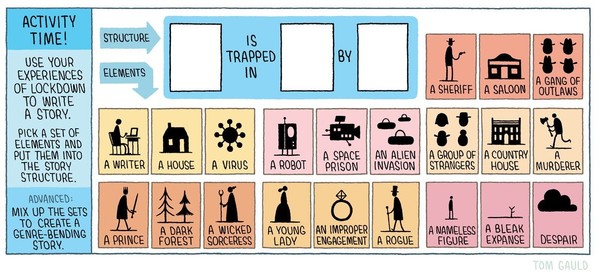
|